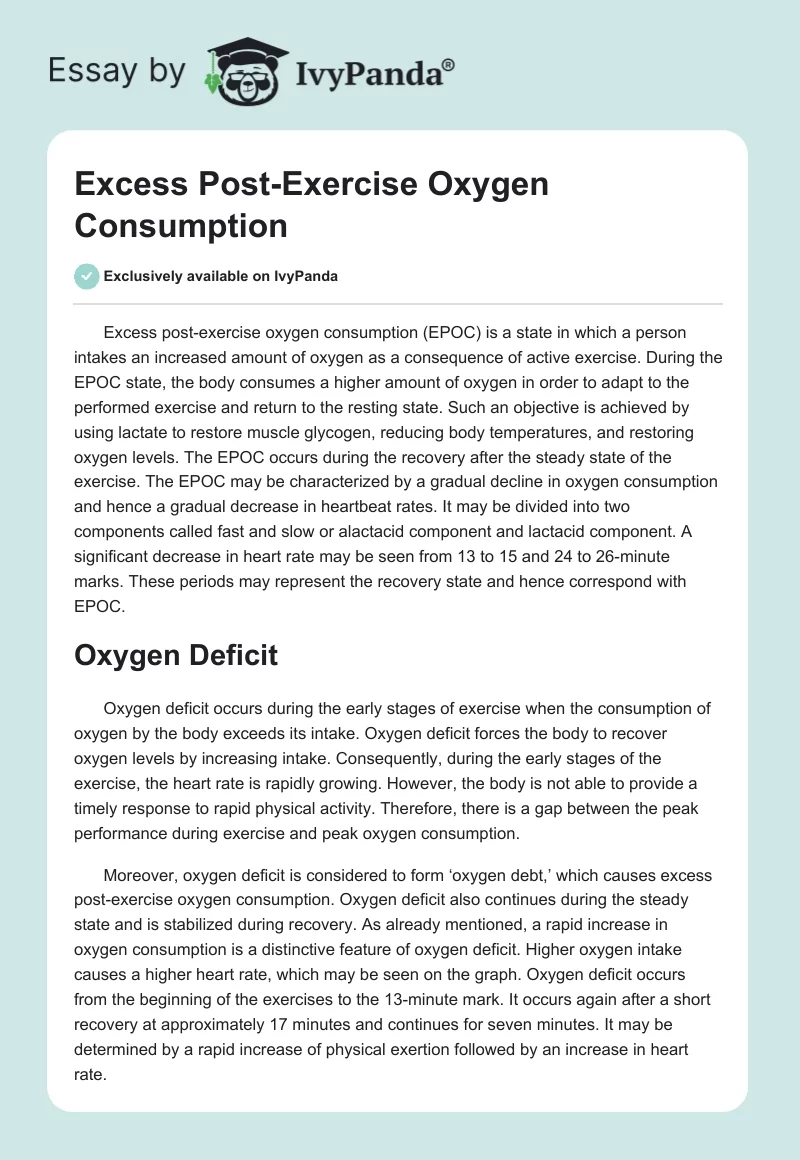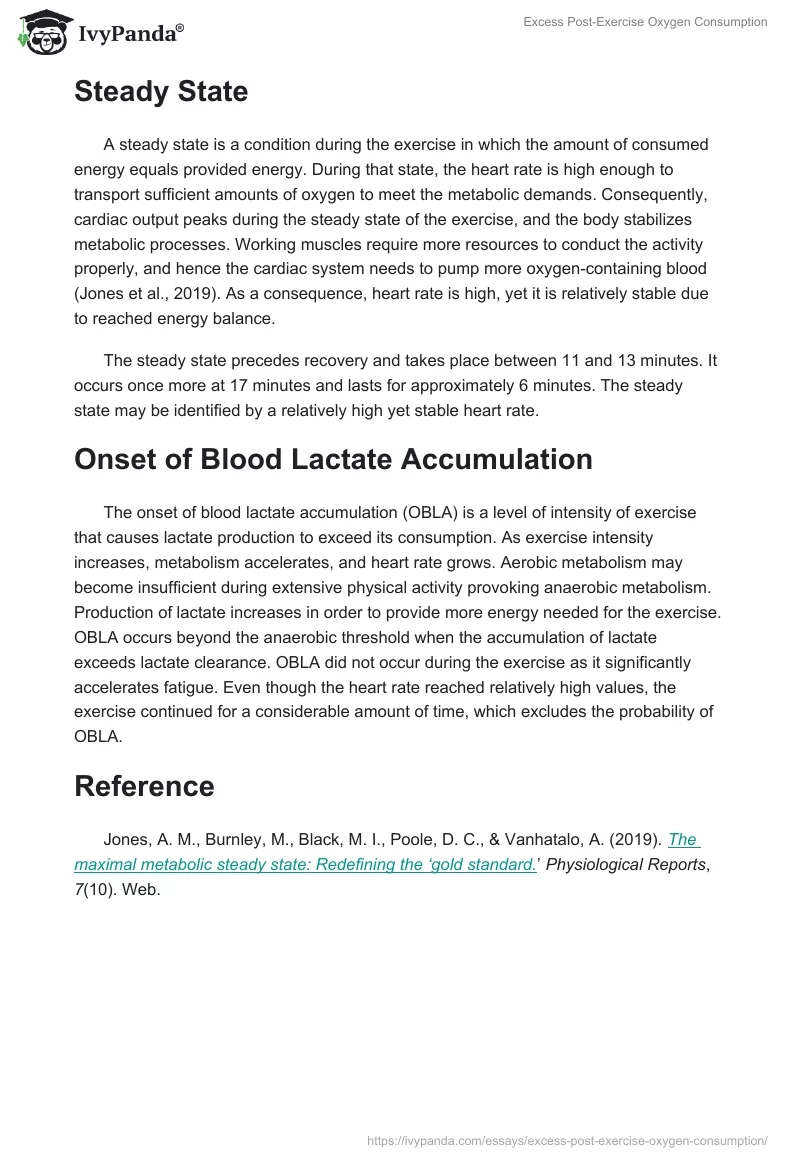Excess post-exercise oxygen consumption (EPOC) is a state in which a person intakes an increased amount of oxygen as a consequence of active exercise. During the EPOC state, the body consumes a higher amount of oxygen in order to adapt to the performed exercise and return to the resting state. Such an objective is achieved by using lactate to restore muscle glycogen, reducing body temperatures, and restoring oxygen levels. The EPOC occurs during the recovery after the steady state of the exercise. The EPOC may be characterized by a gradual decline in oxygen consumption and hence a gradual decrease in heartbeat rates. It may be divided into two components called fast and slow or alactacid component and lactacid component. A significant decrease in heart rate may be seen from 13 to 15 and 24 to 26-minute marks. These periods may represent the recovery state and hence correspond with EPOC.
Oxygen Deficit
Oxygen deficit occurs during the early stages of exercise when the consumption of oxygen by the body exceeds its intake. Oxygen deficit forces the body to recover oxygen levels by increasing intake. Consequently, during the early stages of the exercise, the heart rate is rapidly growing. However, the body is not able to provide a timely response to rapid physical activity. Therefore, there is a gap between the peak performance during exercise and peak oxygen consumption.
Moreover, oxygen deficit is considered to form ‘oxygen debt,’ which causes excess post-exercise oxygen consumption. Oxygen deficit also continues during the steady state and is stabilized during recovery. As already mentioned, a rapid increase in oxygen consumption is a distinctive feature of oxygen deficit. Higher oxygen intake causes a higher heart rate, which may be seen on the graph. Oxygen deficit occurs from the beginning of the exercises to the 13-minute mark. It occurs again after a short recovery at approximately 17 minutes and continues for seven minutes. It may be determined by a rapid increase of physical exertion followed by an increase in heart rate.
Steady State
A steady state is a condition during the exercise in which the amount of consumed energy equals provided energy. During that state, the heart rate is high enough to transport sufficient amounts of oxygen to meet the metabolic demands. Consequently, cardiac output peaks during the steady state of the exercise, and the body stabilizes metabolic processes. Working muscles require more resources to conduct the activity properly, and hence the cardiac system needs to pump more oxygen-containing blood (Jones et al., 2019). As a consequence, heart rate is high, yet it is relatively stable due to reached energy balance.
The steady state precedes recovery and takes place between 11 and 13 minutes. It occurs once more at 17 minutes and lasts for approximately 6 minutes. The steady state may be identified by a relatively high yet stable heart rate.
Onset of Blood Lactate Accumulation
The onset of blood lactate accumulation (OBLA) is a level of intensity of exercise that causes lactate production to exceed its consumption. As exercise intensity increases, metabolism accelerates, and heart rate grows. Aerobic metabolism may become insufficient during extensive physical activity provoking anaerobic metabolism. Production of lactate increases in order to provide more energy needed for the exercise. OBLA occurs beyond the anaerobic threshold when the accumulation of lactate exceeds lactate clearance. OBLA did not occur during the exercise as it significantly accelerates fatigue. Even though the heart rate reached relatively high values, the exercise continued for a considerable amount of time, which excludes the probability of OBLA.
Reference
Jones, A. M., Burnley, M., Black, M. I., Poole, D. C., & Vanhatalo, A. (2019). The maximal metabolic steady state: Redefining the ‘gold standard.’ Physiological Reports, 7(10). Web.


